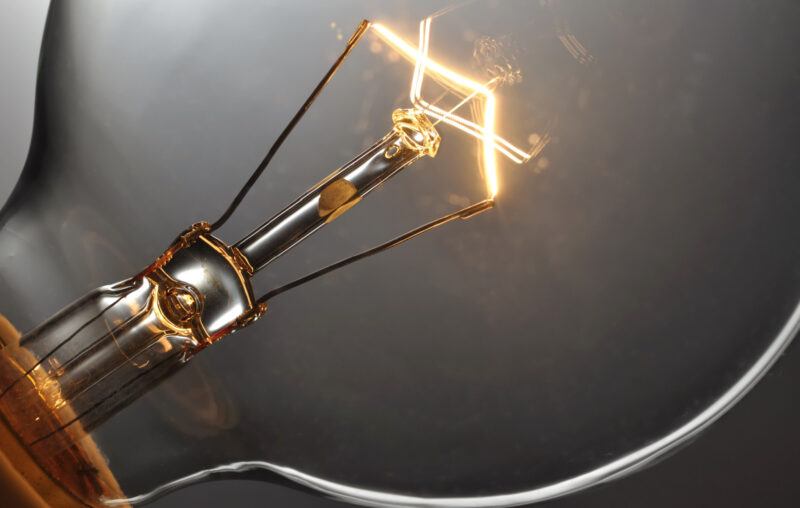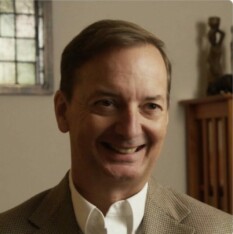Adam Smith’s Oft-Missed Lesson on Human Imagination

One of my favorite teaching lessons in economics is the division of labor. It’s one of those ideas that reminds me of my late father’s dual roles, that of both professor of economics and part-time professional magician. The division of labor story creates that wonderful “aha” moment, similar to my father’s reveal of his latest magic trick when I was a boy.
But I have missed teaching the bigger but less emphasized lesson from Adam Smith, and I think much of our profession has, as well.
In Adam Smith’s famous pin factory example to illustrate the division of labor, one person making a pin could take many hours. In contrast, Smith shows how pins can be made much more quickly by dividing tasks and creating specialists in different operations. In an oft-quoted passage, he writes that “one man draws out the wire, another straights it, a third cuts it, a fourth points it…” Smith writes: “The greatest improvement in the productive powers of labour, and the greater part of the skill, dexterity, and judgment with which it is anywhere directed, or applied, seem to have been the effects of the division of labor.”
This quote finds itself in hundreds of basic economic texts as a masterful illustration, but if the pins themselves were writing the economic texts, they would advise us that the story doesn’t end there.
The quote describes a group of humans acting as if they are specialized machines.
But Smith’s larger point about the division of labor is that this is a second stage, not the end game. In fact, the division of labor gives us the capacity to imagine and innovate, leading to fewer menial tasks done by humans, not more.
How does this happen and who does the innovating?
According to Smith, three groups contributed to innovation in manufacturing, made possible by the division of labor, but three different channels of incentives operate. First, ordinary factory workers have an incentive to look for ways to lighten their tasks. Smith notes that “men are much more likely to discover easier and readier methods of attaining any object when the whole attention of their mind is directed towards that single object than when it is dissipated among a great variety of things.”
In a charming anecdote, Smith tells the story of a boy who works on a fire engine, tasked with a simple job of opening and closing steam valves.
The boy, “who loved to play with his companions, observed that, by tying a string from the handle of the valve which opened this communication to another part of the machine, the valve would open and shut without his assistance, and leave him at liberty to divert himself with his playfellows. One of the greatest improvements that has been made upon this machine, since it was first invented, was in this manner the discovery of a boy who wanted to save his own labour.”
The second source of innovation comes from “the ingenuity of the makers of the machines,” driven by a profit motive, a universally powerful incentive. Any innovation in machinery that improves precision, standardization and output will increase the profits of the machine makers. In a visit to a modern automobile manufacturing plant one will observe dozens of tasks, from painting to welding, now done more consistently and quickly by robots, leading to better safety records.
The third source of innovation, according to Smith, comes from those seemingly least likely to contribute: the “philosophers or men of speculation, whose trade it is not to do anything, but to observe everything; and who, upon that account, are often capable of combining together the powers of the most distant and dissimilar objects.” Their incentive may be the joy of discovering a new idea, or even better, combining it with a new, hoped-for profitable venture.
One of the greatest innovations in pin-making, for example, occurred with a person who was previously completely disconnected from the manufacturing business. John Ireland Howe, a physician, worked at New York Almshouse, and became fascinated during his leisure time watching prisoners manufacture pins in the tedious way Smith had described. He was akin to the philosopher Smith described, the outside observer who questions the tried and true way of doing things.
Howe experimented with machinery that would eventually supplant every human task described by Smith, with ingenious devices that would cut, polish, straighten and do nearly every task, all managed by a single worker. On March 24th, 1841, he applied to the U.S. Patent Office for Patent Number 2,013 for a complex design that had 20 pages of text and five diagrams, which would be one of a sequence of different machines that all had the same goal of increasing both the productivity and the precision of pin-making.
The pin-making output vastly increased over the years, and Howe Manufacturing would eventually become one of the largest pin-making firms in the United States. Today’s pin-making factories have taken the simplest product from Smith’s time in the mid-1700s and turned the humble pin into a dizzying array of complex options and solutions, along with massive productivity increases that come from ingenious new machines.
One U.S. manufacturing company of pins notes on its website that it can quickly and cost-effectively manufacture pins “from virtually any cold head-able material, including alloy steel, aluminum, brass, copper, medium and low carbon steel, nickel alloys, silicon bronze & stainless steel.” And in another lesson straight out of the Wealth of Nation’s insights on trade, some of the simplest sewing pins now come from the Corne company in Ningbo, China, where a minimum order of 5,000 boxes will cost the wholesale buyer around 86 cents each, with what appears to be several hundred pins in each box. From my observations of other Chinese manufacturing companies, my guess is that very relatively few workers are employed in the manufacturing of these pins.
Smith may not have described the innovation process in detail, but he was clearly aware of it as a driving force in any economy. Lessons around the division of labor that stop with Smith’s description of the multiple human tasks miss his largest lesson: it is the human imagination that is most responsible for ongoing economic growth, not the dividing of manufacturing into separate tasks. This innovation comes from three places: the workers themselves, the manufacturers of the machinery, and the outside “philosophers” and inventors.
This general insight would later form the foundation of our more modern “endogenous” economic growth models by economists Barro, Mankiw and Weil. Yet those models, among many others, miss the granular human descriptions of innovation that make Adam Smith such a treat to read each time we revisit his writings.










